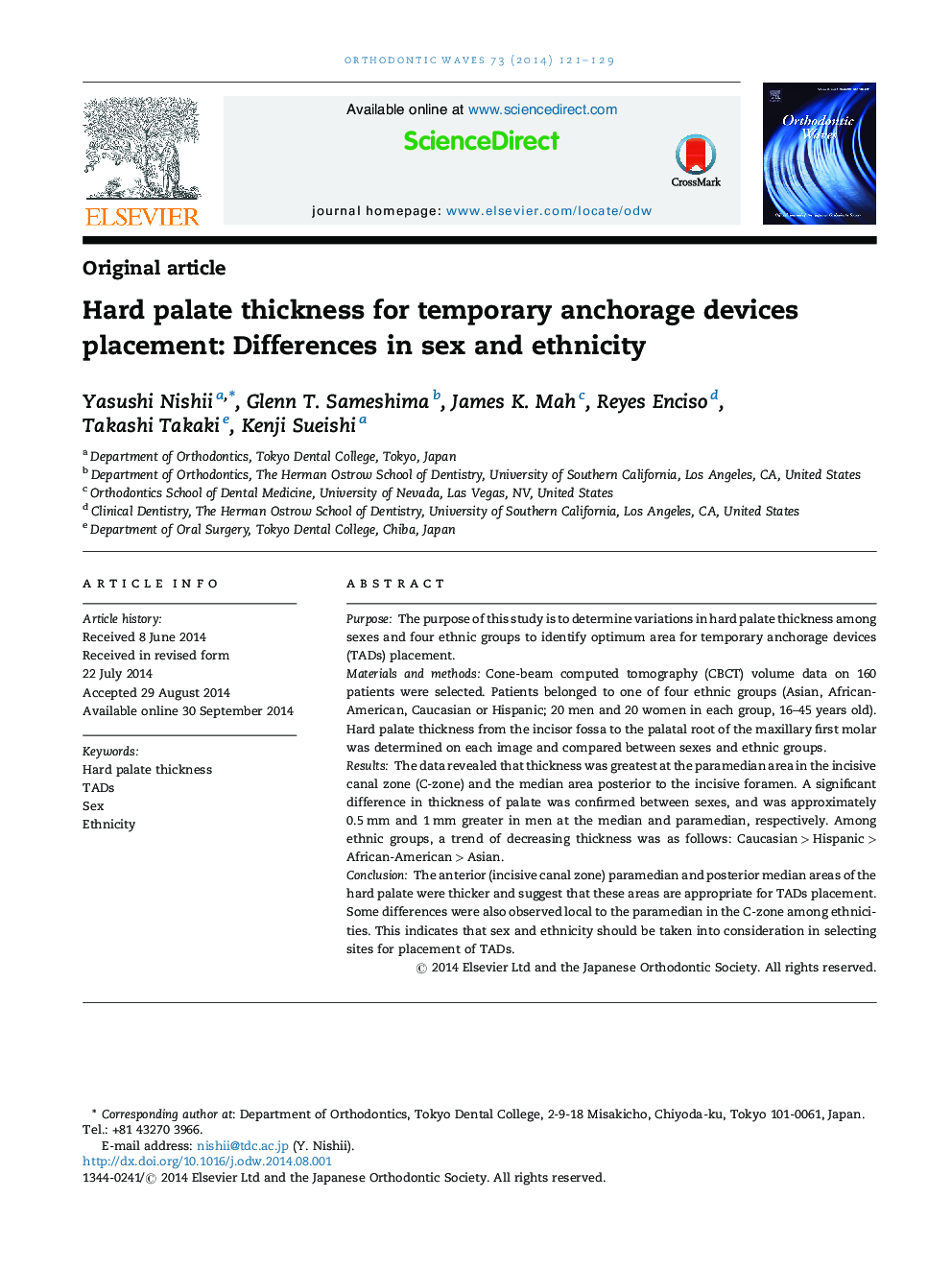| کد مقاله | کد نشریه | سال انتشار | مقاله انگلیسی | نسخه تمام متن |
|---|---|---|---|---|
| 3170331 | 1199779 | 2014 | 9 صفحه PDF | دانلود رایگان |
PurposeThe purpose of this study is to determine variations in hard palate thickness among sexes and four ethnic groups to identify optimum area for temporary anchorage devices (TADs) placement.Materials and methodsCone-beam computed tomography (CBCT) volume data on 160 patients were selected. Patients belonged to one of four ethnic groups (Asian, African-American, Caucasian or Hispanic; 20 men and 20 women in each group, 16–45 years old). Hard palate thickness from the incisor fossa to the palatal root of the maxillary first molar was determined on each image and compared between sexes and ethnic groups.ResultsThe data revealed that thickness was greatest at the paramedian area in the incisive canal zone (C-zone) and the median area posterior to the incisive foramen. A significant difference in thickness of palate was confirmed between sexes, and was approximately 0.5 mm and 1 mm greater in men at the median and paramedian, respectively. Among ethnic groups, a trend of decreasing thickness was as follows: Caucasian > Hispanic > African-American > Asian.ConclusionThe anterior (incisive canal zone) paramedian and posterior median areas of the hard palate were thicker and suggest that these areas are appropriate for TADs placement. Some differences were also observed local to the paramedian in the C-zone among ethnicities. This indicates that sex and ethnicity should be taken into consideration in selecting sites for placement of TADs.
Journal: Orthodontic Waves - Volume 73, Issue 4, December 2014, Pages 121–129
